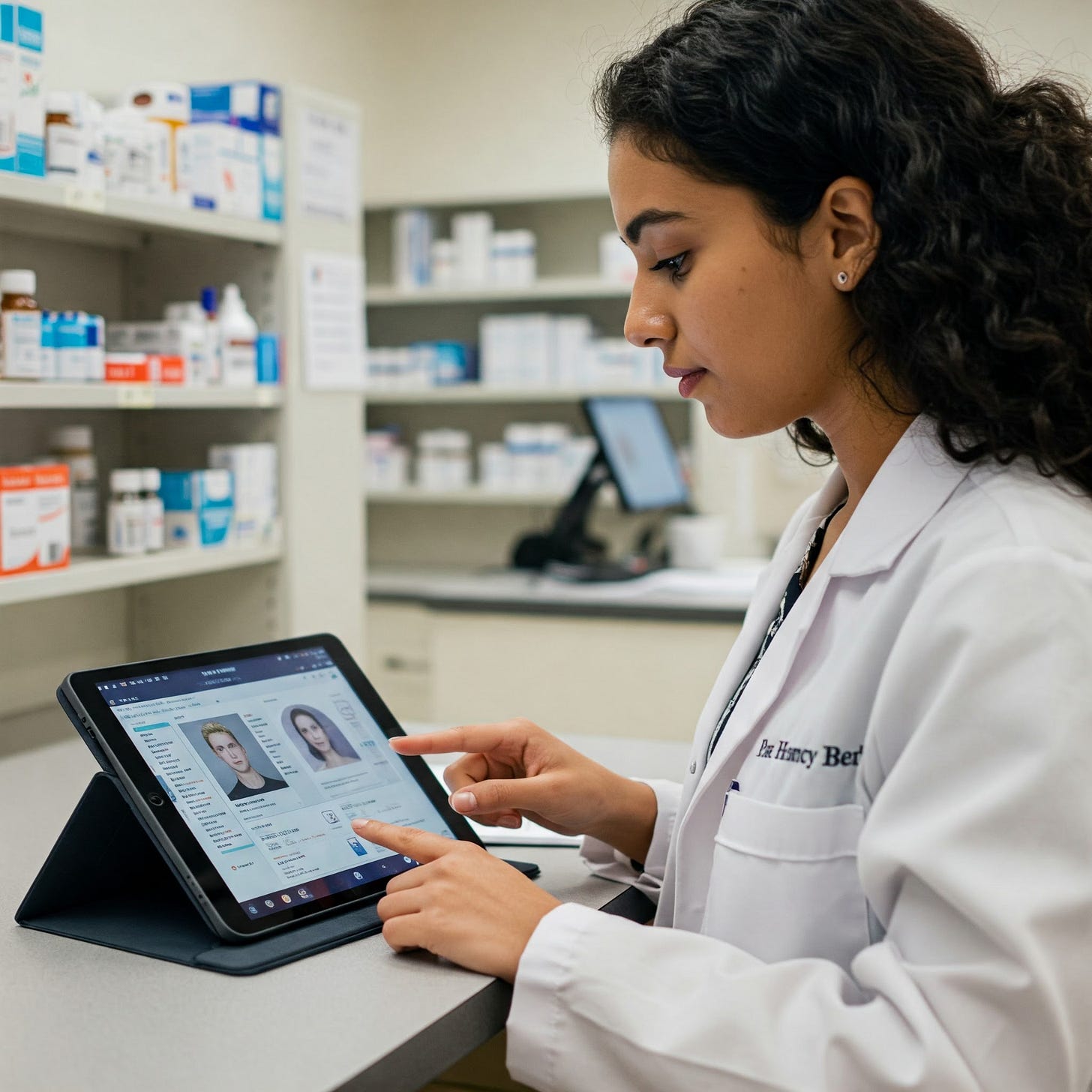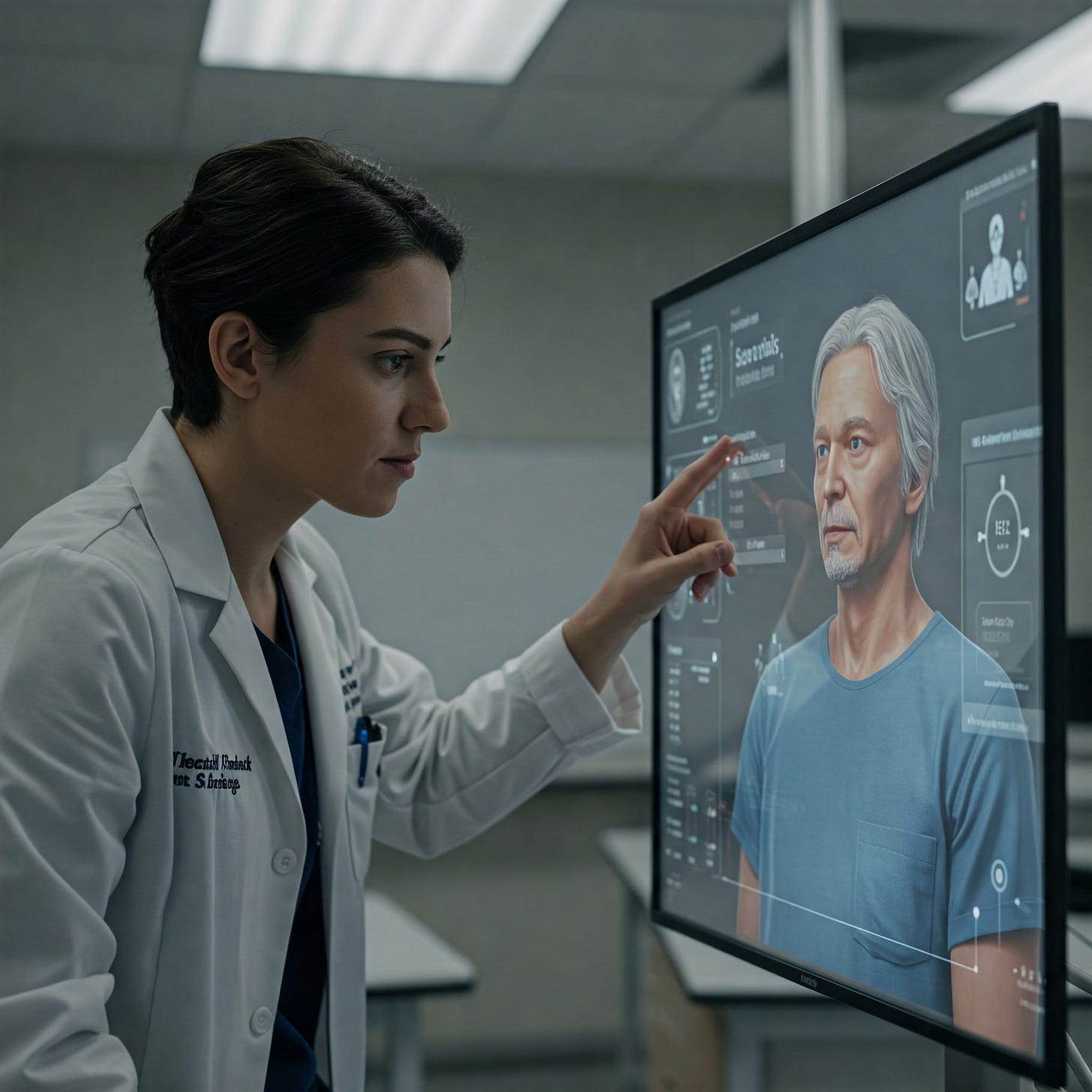Smart Learning: Using AI Responsibly in Health Professions Education
Artificial intelligence should supplement learning, not become a crutch
by Allyson E. Marsh, PharmD, PGY2 Ambulatory Care Pharmacy Resident, University of Mississippi School of Pharmacy
Artificial Intelligence (AI) is rapidly transforming healthcare, and, as a clinician and educator, understanding how to use AI appropriately can significantly enhance and supplement learning.1 From improving diagnostic accuracy to facilitating personalized patient care, AI has the potential to revolutionize the way health professionals work. However, like any powerful tool, AI must be used responsibly and ethically.2 Too often, learners, regardless of discipline, find themselves relying heavily on AI-augmented tools rather than improving their own capabilities as practitioners. When is it appropriate to use AI? How do educators guide learners to effectively and responsibly use AI resources to enhance their knowledge and skills? Let’s examine three key ways in which AI can either be a supplement or a crutch to the health professional in training.
Enhancing Knowledge Acquisition and Research Analysis
One skill that all students must develop, shared across all disciplines, is self-directed learning. AI can be used by health professions students to acquire knowledge, gather information, and synthesize more efficiently.3,4 By streamlining the process of searching through extensive medical databases and analyzing complex datasets, AI-powered tools can help students stay current with the latest research. However, depending on AI-generated summaries and study aids may encourage passive learning. Students often face the temptation to simply regurgitate information gathered and synthesized by the AI-augmented tool; this often results in the learner failing to understand or grasp the practical nuances of that information and its application in real-world scenarios.1 Educators should encourage their students to leverage AI-powered tools and resources to analyze research data and ease the burden of sifting through countless articles or studies. This streamlines the information-gathering process, and this can be used by students to spend more time (and mental effort) on comprehension and content application. Caution students to avoid relying on AI-generated summarizations of articles, guidelines, or textbook chapters as their source of understanding—as future clinicians, it is essential to understand, critically evaluate, and interpret the content.
Improving Clinical Skills Through Simulations
AI can be used to simulate patient scenarios to supplement clinical education, providing students the opportunity to practice patient evaluation, problem identification, and critical thinking skills in a controlled environment.4 AI-powered simulations can offer realistic case studies, provide learners feedback regarding their decisions, and help to refine students’ clinical abilities by adapting instruction to their level of knowledge and skills.5 However, patient care is increasingly individualized and nuanced; students must be prepared to address emotional, cultural, and psychological factors in their approach that cannot be effectively replicated by technology. Attempting to provide patient-specific care to a human being in a real-world setting is different than playing what is, essentially, a choose-your-own-adventure clinical video game. Moreover, treatment guidelines are regularly updated, and these changes may not be factored into AI-generated simulations or proposed treatment plans. As educators, it is important to remind students that AI-powered simulations and patient cases are, at their core, simply an alternative form of the patient case examples found in their textbook or included in an instructor’s lecture. These cases were created to help foster, develop, and refine clinical judgment and critical thinking skills, not to replace opportunities to interact with real people in the real world.
Assisting with Critical Thinking and Decision-Making
AI resources can support both knowledge acquisition and practical application through simulation. However, it remains essential that health professions students develop critical thinking and independent decision-making skills.5 AI can provide data-driven insights, but it’s up to the health professional to interpret this data in the context of a patient’s unique needs. As these needs often require more humanistic skills—such as empathy, interpersonal communication, and experience-based decision-making—AI programs are incapable of taking responsibility for their recommended solutions or making decisions that appropriately address all aspects of a situation. It would be unethical and irresponsible to rely on AI-generated patient care plans without exercising professional judgment; these programs may not consider recent clinical advances and often fail to account for patient-specific factors. Educators can encourage learners to use AI-augmented tools that provide feedback on clinical decisions and assist in prioritizing treatment goals, but, ultimately, learners are accountable for the recommendations they make. Encouraging students to view AI as a supportive tool rather than a replacement for their clinical reasoning is essential.
The Bottom Line…
Using AI-augmented tools have great promise in health professions education, but it must be used thoughtfully and responsibly. As educators, it’s our role to guide students in using AI as a tool for learning and refining their skills while ensuring they maintain their professional judgment and critical thinking abilities. We have a responsibility as clinicians to never compromise our ethical and professional standards. AI can assist with research, improve information gathering, and support decision-making—it can support a learner’s growing knowledge and experience; but, in the end, each student must be accountable for the decisions and recommendations they make. By guiding learners in responsible AI use, we can help shape the next generation of health professionals who are not only grounded in the shared core values of a profession but equipped to succeed in an increasingly technology-driven world.
References
Jiang F, Jiang Y, Zhi H, et al. Artificial intelligence in healthcare: past, present and future. Stroke Vasc Neurol. 2017;2(4):230-243.
Char DS, Shah AS, Magnus D. Implementing machine learning in health care-addressing ethical challenges. N Engl J Med 2018; 378(11): 981-983.
Mir MM, Mir GM, Raina NT, et al. Application of Artificial Intelligence in Medical Education: Current Scenario and Future Perspectives. J Adv Med Educ Prof. 2023;11(3):133-140.
Bajwa J, Munir U, Nori A, Williams B. Artificial intelligence in healthcare: transforming the practice of medicine. Future Healthc J. 2021;8(2):e188-e194.
Khanal A, Basnet B. AI in Healthcare - Are We Missing The Human Element?. American Journal of Patient Health Info. 2024; 1(2). https://doi.org/10.69512/ajphi.v1i2.85


